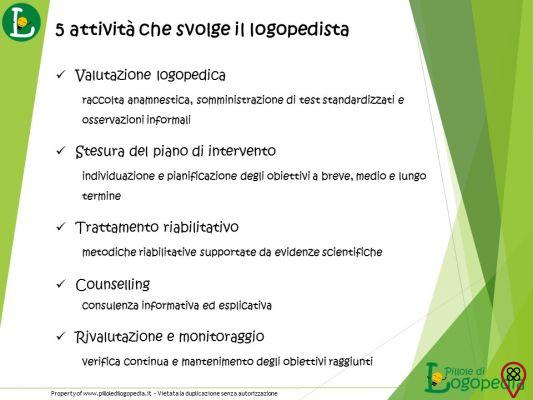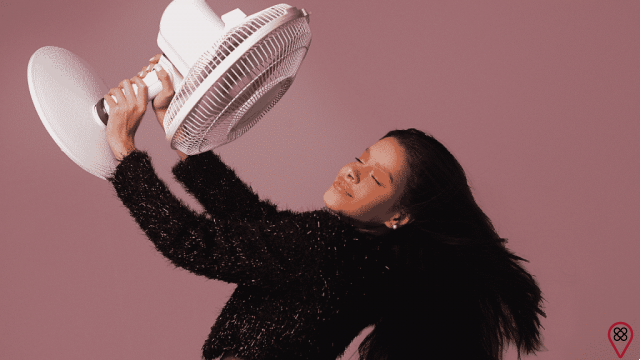Everyone, at some point in their lives, has had a headache, a nuisance whose cause we often don't investigate, because it tends to be something that doesn't last long and goes away soon after taking a pain reliever. But the truth is that this type of medication only treats the symptom, the pain, which may indicate something more serious, which needs to be investigated. There are several causes of headache, and in this article, we will cover the top 10 causes of headache.
Allergies

Allergies can cause headaches, especially respiratory and drug-induced headaches. In the case of respiratory problems, symptoms such as watery and itchy eyes, runny nose, pain in the face or a feeling of heaviness around the cheeks and nose. In the case of drug reaction, in addition to headache, swelling, hives, diarrhea and intestinal cramps may occur.
Sinusitis

Breathing problems can cause headaches. As the paranasal sinuses are connected to the same chain of nerves in the skull, when the inflammatory process occurs, along with the stretching of the tissues and the increase in pressure within these regions, the free nerve endings are activated, so the pain can spread. to other areas of the head.
The most common symptoms are: pain around the nose and eyes, runny nose or nasal congestion, bad breath, cough and fever.
Anxiety

Anxiety disorder is a disease that for some time was not seen as limiting or as something that could trigger physical consequences. But this evil is also a headache-causing agent. A person who is always worried about the uncertainty of the future ends up feeling stressed and tense all the time.
This wear and tear leaves the brain exhausted, which leads to a headache in the forehead. It can be even more severe in the midst of a stressful situation or one that involves a lot of mental effort. It's important to know when to stop and relax!
salsa in sages

This is a rare condition, characterized by excruciating and intense pain, considered the strongest headache there is. This type of headache attacks one side of the face and the eye, occurring in frequent bursts (as if it were a successive burst of shots, hence the name “salva”).
In most cases, this pain appears during sleep, and can extend throughout the day, usually accompanied by a runny nose, watery eye and redness in the eyelid – on the same side as the pain. There is no cure and treatment is palliative to lessen the duration of the attacks.
Caffeine withdrawal

Caffeine is a very popular psychoactive, being a component present in beverages such as coffee, teas and some soft drinks. It acts on the central nervous system as a stimulant, also causing a vasoconstrictor effect. Frequent consumption makes our body get used to this effect.
So, when we suddenly withdraw caffeine, blood vessels dilate, which can cause headache. This usually occurs in the first few days of withdrawal and the pain is usually throbbing, accompanied by irritability and sometimes drowsiness.
Migraine

A migraine is an intense headache that can range from moderate to severe and last from minutes to hours or days. It is a highly disabling disease that can temporarily impair vision, cause nausea, dizziness (as is the case with vestibular migraine) and sensitivity to light and aromas.
A very common symptom that precedes pain is aura - a visual change characterized by the appearance of bright spots or a blur at the limits of the visual field, which can last from 15 minutes to 1 hour before the onset of pain.
Tensão

Tension headaches are caused by emotional issues such as anxiety (which we mentioned above), stress, poor posture or a bad night's sleep. It is the most common type of headache and symptoms consist of pain in the back of the neck or forehead, similar to pressure, with mild to moderate intensity, discomfort in the shoulders and neck and sensitivity to light and noise.
To alleviate this pain, it is advisable to adjust the routine, avoiding stress, and improve posture, doing physical activity, for example, or even seeking moments of relaxation.
Temporomandibular joint (TMJ)

The temporomandibular joint is the joint between the mandible and the skull. Dysfunctions in this region can cause pain, especially headaches. It is usually a squeezing pain, which improves when we relax.
Other symptoms are pain in the ear, neck and face, as well as difficulty opening and closing the mouth, with clicking sounds when doing so. Temporomandibular disorders (TMD) can also worsen other types of headache, such as migraine.
Digestive problems

Headaches can also be related to stomach problems such as dyspepsia (indigestion), gastroesophageal reflux disease, constipation, celiac disease, food allergies (as mentioned above) and H. pylori infection.
Going without food for a long time – especially if the person is already predisposed to migraines or headaches – and excessive alcohol consumption are also factors in triggering headaches. Reevaluating your diet and creating a healthier eating habit can help.
You may also like
- 8 Daily Habits That Could Be Giving You Migraines
- 6 ways to start your day right without caffeine
- Understand the headache, according to Cristina Cairo
- Learn how Traditional Chinese Medicine can relieve headaches
- Understand what can cause a constant headache
Arteries atemporal

It is an autoimmune disease that causes chronic inflammation of the arteries and has several symptoms, headache being one of them. Recurrent fever, weakness and stiffness in the muscles of mastication, tiredness, weight loss and anemia may also appear.
In more severe cases, this disease can cause sudden blindness and aneurysm, so diagnosis and treatment need to be early.
How to relieve headaches
In case of any type of pain, the ideal is to consult a doctor. But there are ways to ease the pain and feel a little better while looking for the most appropriate treatment. Here are some simple ways:
Cold or warm compresses
To relax, the ideal is to make a warm compress. But if the problem is migraine, the indication is a cold compress, which helps to constrict the vessels. In both cases, just apply to the area of pain.
drink coffee

As we've already said, caffeine helps block pain receptors in the brain, which slows the spread of pain. So, a cup of coffee can help contain the problem. Just don't take it if you're removing caffeine from your system.
head massage
In cases of tension headache, massaging the scalp can be a good alternative, as it helps to relax and stimulate blood circulation.
Sleep well

Everyone knows that sleeping well is essential to keep your health up to date, as it is during sleep (in total darkness) that we produce melatonin, which is responsible, among other things, for our immune system and the general good functioning of our body.
Drink hot tea
Teas are excellent drinks to promote relaxation. Not to mention that some substances help treat abdominal discomfort, stress, nasal congestion and other discomforts that can trigger headaches.
Now that you know some causes of headaches, be aware if you experience any of the symptoms we mentioned here. According to data from the Spanish Headache Society (SBCE), collected in 2017, headache affects more than 140 million Spanish people.
A study released in 2019 in the Archives of Neuro-Psychiatry reveals that primary headaches are among the three most prevalent neurological disorders in the world, with migraine being considered the second most disabling disease. The study references a survey carried out by the WHO in 2015, based on the Global Burden of Disease (GBD). In new surveys released by the GBD in 2019, the data remains the same.
If you are part of this large group of people affected by this nuisance, do not hesitate to look for a specialist doctor and, under no circumstances, try to self-medicate. According to a survey carried out by the Academia Españaeira de Neurologia (ABN), released in 2016, 81% of people self-medicate to treat headaches. And this is dangerous, as the medication can even increase the intensity of pain, or worse: cause adverse reactions, putting your life at risk. So take care! But do it responsibly.

























